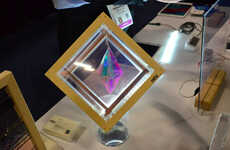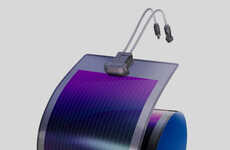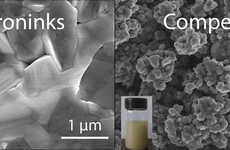
Inkjet Printed Solar Cells
References: konarka & bizjournals
In an advancement that could radically reduce the cost of making solar panels, Massachusetts-based Konarka Technologies has developed and successfully demonstrated the ability to print solar cells with an inkjet printer. By using the inkjet printing process in the manufacturing of solar cells, the need for "clean rooms" is eliminated, and manufacturers can work with a number of different substrates, including plastics, and different colors.
Rick Hess, president and CEO at Konarka stated, “Demonstrating the use of inkjet printing technology as a fabrication tool for highly efficient solar cells and sensors with small area requirements is a major milestone. This essential breakthrough in the field of printed solar cells positions Konarka as an emerging leader in printed photovoltaics.â€
Rick Hess, president and CEO at Konarka stated, “Demonstrating the use of inkjet printing technology as a fabrication tool for highly efficient solar cells and sensors with small area requirements is a major milestone. This essential breakthrough in the field of printed solar cells positions Konarka as an emerging leader in printed photovoltaics.â€
Trend Themes
1. Inkjet Printed Solar Cells - Printing solar cells using inkjet technology reduces manufacturing cost and eliminates the need for clean rooms.
2. Printed Photovoltaics - Printing photovoltaics allows for the use of different substrates and colors for solar panels.
3. Emerging Leaders in Printed Photovoltaics - Printed photovoltaics is a field with potential for new industry leaders to emerge, as shown by Konarka's breakthrough.
Industry Implications
1. Solar Energy Industry - Inkjet printed solar cells can disrupt the traditional solar panel manufacturing industry and create new opportunities for innovation.
2. Printing Industry - The printing industry can find new markets and applications by using inkjet printing technology for the manufacturing of solar cells.
3. Plastics Industry - Inkjet printed solar cells allow for the use of plastics as substrates, creating opportunities for innovation in the plastics industry.
6.1
Score
Popularity
Activity
Freshness























